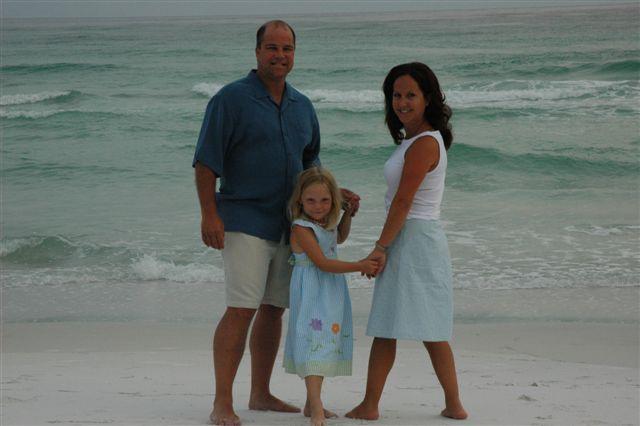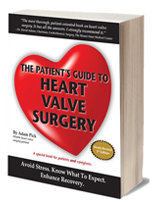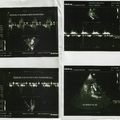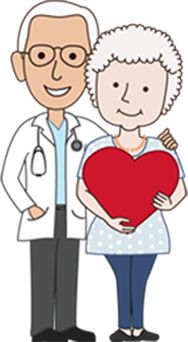Adam's Heart Valve Surgery Blog – Page 83
Is It Possible To Cure Mitral Valve Prolapse?
By Adam Pick on August 23, 2007
As I remember…
When I was first diagnosed with heart valve disease, my immediate thought was, “Okay. What’s the first step to treating it? It must be curable, right?”
For this reason, when I receive an email that reads, “What’s mitral valve prolapse? Or, how can I cure mitral valve prolapse?”, I tend to stop and remember that moment.
As for the first part of the question, mitral valve prolapse effects the flaps (or leaflets) of the mitral valve. Simply put, the valve leaflets don’t seal properly. In mitral valve prolapse, one of the flaps, or leaflets, moves back into the atrium when the heart beats. This “prolapse”, or buckling, enables blood to flow from the ventricle back into the atrium as shown in the anatomy of the heart.
So you know, about one in twenty Americans has mitral valve prolapse – so, it’s a relatively common heart valve disorder. People are usually born with it as a congenital condition. Interestingly, more women have mitral valve prolapse and mitral valve prolapse symptoms than men.
Now, for the tough part of the question… “How To Cure Mitral Valve Prolapse?”
Well, the first thing you should know is that many people with mitral valve prolapse do not need to treat, or cure, their mitral valve prolapse. If the blood flow back into the ventrical is trivial, no treatment is necessary.
However, if the blood flow back into the ventricle is significant – a cardiac disease known as mitral regurgitation – the heart becomes strained as it is forced to work “overtime” to help circulate blood throughout the heart. If this occurs, symptoms of mitral valve prolapse may manifest in the patient.
- Sometimes, this may result in the patient taking medication to enhance the flow of blood through the mitral valve.
- Other times, if the mitral valve prolapse is very significant, the patient may need to have mitral valve repair or mitral valve replacement surgery.
I hope this help you better understand mitral valve prolapse and how to cure it.
Keep on tickin!
Adam
What Are The Symptoms Of Tricuspid Valve Regurgitation
By Adam Pick on August 23, 2007
One of the most common questions I get via email is about heart valve disease symptoms. I just received an email that reads, “What are the tricuspid valve regurgitation symptoms?”
It’s a great question. Knowing what the documented, heart valve disease symptoms is critical as the patient or caregiver tries to diagnose themselves or their loved. But, you should be aware, some patients are completely asymptomatic – see more below. As discussed in the anatomy of your heart valves, the tricuspid valve is one of four valves in your heart. Along with the mitral valve, the pulmonary valve, and the aortic valve, the tricuspid valve acts to help manage the flow of blood in one direction through your heart. Similar to the pulmonary and aortic valve, the tricuspide valve has three leaflets.
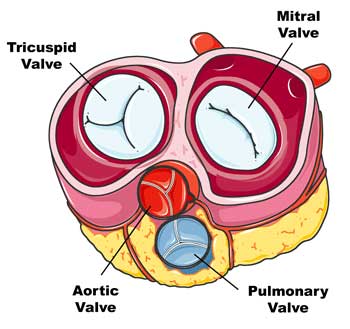
A Prayer For Tracey Orr, A Heart Valve Surgery Patient
By Adam Pick on August 22, 2007
Hey eveybody,
One of my readers from Chicago, Tracey Orr, had heart valve surgery on Monday at 7am.
She had a cow valve replacement surgery.
According to her husband, Tracey is still in the ICU.
Unfortunately, Tracey’s heart rhythm has yet to stabilize.

If you have a moment, please wish Tracey a great, big healthy prayer.
Keep on tickin!
Adam
Pumphead And Cardiac Depression: What Should Patients Know?
Written By: Adam Pick, Patient Advocate, Author & Website Founder
Page Last Updated: May 12, 2025
I’ll never forget the first time I heard the phrase “Pumphead”. I was interviewing a former patient about her heart valve surgery experience for my book.
She was discussing the short-term mental impact of open heart bypass surgery. Specifically, she was remembering a challenging time during her recovery when she suffered from cardiac depression.

Should I Use A Heart Rate Monitor After Open Heart Surgery?
Written By: Adam Pick, Patient Advocate, Author & Website Founder
Page Last Updated: May 15, 2025
Leading up to my heart valve surgery, I had always been active and athletic. From soccer to surfing, I really enjoy sports. Mostly, I think I like being outside. But, I also like the endorphin rush after a good run, swim or hike.
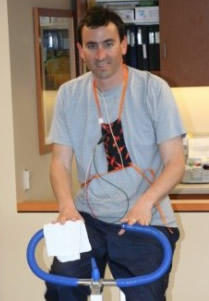
Me (Adam) At Cardiac Rehab Clas
Interestingly enough, I was never really interested in monitoring my heart rate during the first 35 years of my life. Then… I had my open heart surgery.
Guess what? From then on, I became a little more interested in the pattern of my heart beats. I really became good at heart rate monitoring during my second month in cardiac rehab. Thanks to the excellent help of Debbie, Karey and Socorro at the Torrance Memorial Cardiac Rehab Clinic, I was able to get a solid understanding of how and when to (i) increase my heart rate and (ii) decrease my heart rate.
To help me, I purchased an inexpensive heart rate monitor. I believe you can get heart rate monitors at most sporting stores (Sport Chalet, Big Five) or Wal-Mart. I just looked at Amazon. If you want, click this link and you will be taken straight to Amazon’s heart monitor section. (Fyi, I do not make any money from your purchase at Amazon.)
I think my heart monitor cost $40. From what I hear, you should not buy an expensive model. Most of the monitors (e.g. Polar) all use the same technology.
Related Links:
- Surgeon Q&A: High Heart Rates After Heart Valve Surgery
- Cardiology Interview: The Importance of Cardiac Rehabilitation
Keep on tickin!
Adam
Any Images of an Aorta Cat Scan? Pictures, Xray, Diagram Of The Aorta?
By Adam Pick on August 21, 2007
Earlier today, I received a question that reads, “Do you have a cat scan of the aorta? How are cat scan aorta images used during diagnosis?”
I’m not sure I completely understand this questions. But, it turns out that I just found a cat scan image of the aorta. But first, I thought we all might want to know a learn a little more about what a cat scan is and how cat scans are used relative to heart valve surgery. As Radiology Info notes, CT scanning—sometimes called CAT scanning—is a noninvasive, painless medical test that helps physicians diagnose and treat medical conditions.
CT imaging uses special x-ray equipment to produce multiple images or pictures of the inside of the body and a computer to join them together in cross-sectional views of the area being studied. The images can then be examined on a computer monitor or printed. CT scans of internal organs, bone, soft tissue and blood vessels provide greater clarity than conventional x-ray exams.
Using specialized equipment and expertise to create and interpret CT scans of the body, radiologists can more easily diagnose problems such as cancers, cardiovascular disease, infectious disease, trauma and musculoskeletal disorders.
Here is a cat scan picture of the aorta:
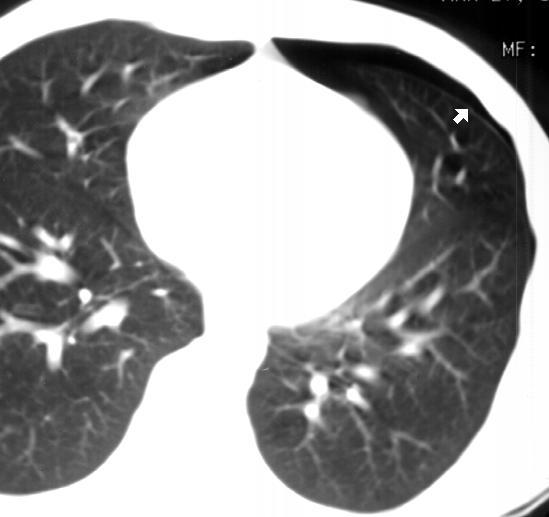
According to Radiology Cases In Peditric Emergency Medicine, the cat scan aorta image above is from a 15 year-old male who is complaining of chest pain. The CT scan demonstrates a small, left-sided pneumothorax. The arrow (above) points to the air space within the pleural space. That said, the aorta is normal.
Wow. That was way over my head!
Regardless, I hope this helps you better understand what a cat scan of the aorta looks like.
Keep on tickin!
Adam
Do You Have Any Keyhole Surgery Images For Heart Valve Replacements?
By Adam Pick on August 19, 2007
As I have posted in prior blogs, there are a number heart surgery centers that are practicing heart valve repair and heart valve replacement using minimally invasive procedures including robotic surgery devices and transcatheter approaches.
That said, I received a few emails asking me if I have any keyhole surgery images that explain how this non-invasive heart valve surgery occurs.
Luckily, I do.
Here is a keyhole surgery image that explains how aortic heart valve replacement occurs using a catheter.
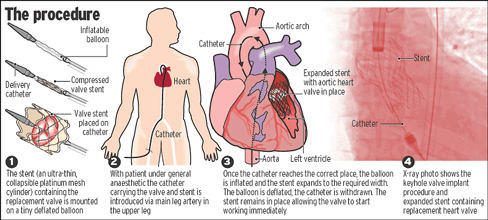
If you are interested to read patient success stories using this procedure style, please click below:
- Pulmonary Valve Replacement Patient Success Story
- Keyhole Aortic Valve Replacement Patient Success Story
I hope the keyhole surgery images and noninvasive heart surgery patient success stories help!
Keep on tickin,
Adam
After Ross Procedure, Melissa Is Ready To Leave The Hospital
By Adam Pick on August 19, 2007
Over the past week, I have been sharing with you the story of Melissa Causey. Melissa and I became friendly after her Uncle Ted sent Melissa a copy of my book.
If I remember right, that was about two months ago. Like me, Melissa needed aortic valve replacement surgery. And, like me, Melissa chose the Ross Procedure technique as her surgical option.
Throughout this process, Melissa has had an amazing attitude. Although I’m sure she had her moments of fear, uncertainty and doubt (like most heart valve surgery patients), her story is inspiring.
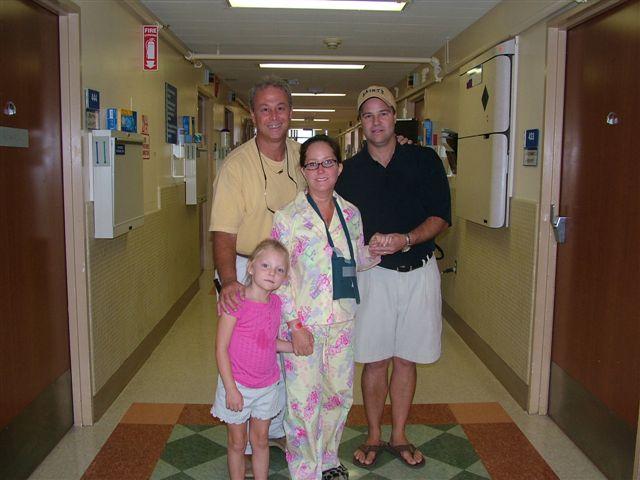
Last Tuesday, Melissa entered the hospital for her heart valve replacement operation. Dr. William Ryan of Cardiothoracic Surgery Associates of North Texas, a highly regarded Ross Surgeon specialist, was Melissa’s surgeon.
Guess what? Today, five days later, Melissa will be going home. Amazing!
Wooo-Whooooo!!!!
Keep on tickin!
Adam
How Sore Are Your Chest Muscles After Heart Surgery?
Written By: Adam Pick, Patient Advocate, Author & Website Founder
Page Last Updated: June 7, 2025
Every so often I receive an email that really makes me remember my heart valve surgery experience, especially the recovery.
Some of those memories are joyful. And, some of those are…. well… not so joyful.
This blog is in response to an email that reads, “How sore are your chest muscles after heart surgery?”
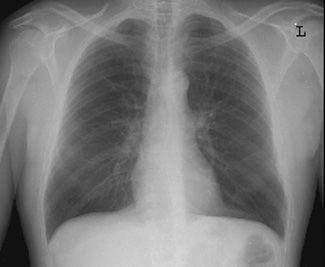
Hmmmmm. To answer that question, I have to let you know that there are many different types of heart surgery – some procedures require the sternum to be split and some heart surgeries are noninvasive that do not require “chest cracking”. There are also transcatheter procedures that do not require an incision to the patient’s chest or ribs.
My aortic and pulmonary valve replacements surgery (the Ross Procedure) required my chest bone to be broken to give the surgeon better access to my heart.
That said, I will respond to the question about chest muscles after surgery from my own personal perspective. Make sense? Okay. Here goes.
“Owwwwww!!!!!!!!!!!!!!!!!!!!!!!!!!!!!!!”
Yep. That about sums it up! I could go on and on but I won’t. So you know, I have interviewed hundreds of patients about their chest muscles after heart surgery and they all basically say the same thing, “It hurts! But, sore chest muscles after heart surgery is a small pain for a long-term gain!”
Here’s the good news… There are many new medical advances that are making heart surgery recovery much more comfortable for patients. In fact, some patients suggest they are no longer experiencing pain after surgery and many do not take any form of opioids after their procedure.
To learn all about these new techniques for managing pain after heart surgery, please review these links:
- Rigid Sternal Fixation: A New Approach to Sternal Closure
- Enhanced Recovery After Cardiac Surgery: Top 5 Facts
- Cryoanalgesia: What Should Patients Know?
Keep on tickin!
Adam
Back Pain And Mitral Valve Prolapse: What Should Patients Know?
Written By: Adam Pick, Patient Advocate, Author & Website Founder
Page Last Updated: July 15, 2025
There are a number of symptoms for mitral valve prolapse as I have written about in a prior blog. However, I just received a patient email asking, “Can you have back pain with mitral valve prolapse?”
This is a pretty interesting question. I’ll tell you why.
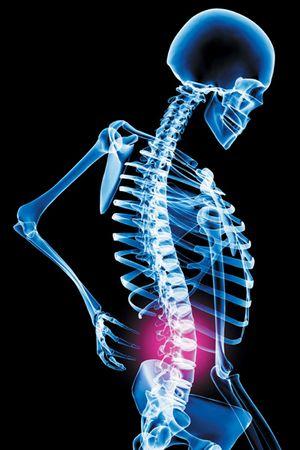
First, for three years before my heart valve surgery I had chronic, lower back pain. I saw chiropractors. I saw massage therapists. I had prolotherapy done. I had cranial sacral therapy. I even went to a Chinese healer.
Guess what? Nothing helped!
The other reason this is interesting because after my heart surgery recovery, I noticed that my lower back pain was no longer present. It’s been awhile now since my aortic and pulmonary valve replacements (about 20 months), but my lower back pain is gone.
Interesting, right?
Maybe back pain is a symptom of heart valve disorders including aortic stenosis and mitral valve regurgitation? So you know, I just did some research on this topic in Google and medical journals. I visited the websites of Cleveland Clinic and Mayo Clinic to see if there was some research about back pain and heart valve disease. Unfortunately, I did not find any literature on this topic.
Anyways, that’s about all I know about back pain as a symptom of mitral valve prolapse.
Related Links:
- What Are the Symptoms of Heart Valve Disease?
- Leaking Heart Valve Symptoms: What Should Patients Know?
Keep on tickin!
Adam
What Do Heart Valves Do?
Written By: Adam Pick, Patient Advocate, Author & Website Founder
Page Last Updated: July 10, 2025
I just received a great patient mail that asks, “Hi Adam, What do valves in the heart do?”
Considering the complexity of the body and your heart, it’s a great question.
Often times, I find that answering this question helps both heart valve surgery patients and caregivers.
The answer to the question, “What do heart valves do?”, is actually pretty simple. The four valves in your heart – mitral valve, aortic valve, tricuspid valve and pulmonary valve – are used to control the flow of blood through your heart.
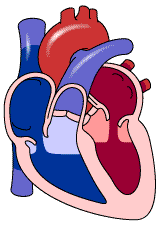
When heart valves function properly, the valves help blood move in the heart in one direction. However, when there are problems with a heart valve (aortic stenosis, mitral regurgitation, calcified leaflets, etc.), blood can flow backwards or blood can not freely flow through the heart.
If a heart valve defect or heart valve disorder is significant, several long-term problems can occur for the patient. That is why heart valve surgery – either heart valve repair or heart valve replacement – may be required.
I hope that helps answers your question of, “What do valves in the heart do?”
Related Links:
Keep on tickin!
Adam
Foods For People That Had Open Heart Surgery
By Adam Pick on August 18, 2007
One of the many things I love about life is… Food.
In fact, right now I’m waiting for my new bride, Robyn, to get home from work so we can go out for dinner and officially start the weekend. But, as of this moment… SHE’S LATE AND I’M STARVING!!!
I guess that brings up a pretty interesting topic… Foods For People That Had Open Heart Surgery!!!
My gut tells me you might want to know if your food consumption will change following cardiac surgery including open heart valve repair or open heart valve replacement.
“Am I right?” (If no, skip this blog.)
Oh, good. You’re still reading. That must mean you’re somewhat interested to know whether or not there are any special foods for patients that had open heart surgery.
So you know, I had aortic valve replacement in 2005. One of the reasons I chose this surgical option (known as the Ross Procedure) was because I did not want to take any medication (Coumadin) after my heart valve surgery to prevent clotting on a mechanical valve.
What Are Common Open Heart Surgery Survival Rates?
Written By: Adam Pick, Patient Advocate, Author & Website Founder
Page Last Updated: June 5, 2025
I write this blog nearly 20 years after open heart surgery. In 2005, I had a double heart valve replacement surgery via the Ross Procedure.
So you know, I am now fully recovered. I am back surfing after heart surgery and I just Scuba dived with Ethan, my son, seventeen years after my aortic and pulmonary valve replacements.
“Why I am I telling you this?”
I share this with you – the patient or caregiver – to help you understand that most patients do not die from open heart cardiac surgery. Trust me. The statistics are real.

What Is Mitral Valve Buckling?
Written By: Adam Pick, Patient Advocate, Author & Website Founder
Page Last Updated: July 16, 2025
Every once and a while I get stumped by a patient question. Sometimes, I get really stumped. Today is one of those days.
I just received an email that I will do my best to answer. However, if you have anything to add, feel free to provide some insight in the comments section of this blog. The patient question reads, “Hi Adam, What is mitral valve buckling? Thanks!”
So you know, this is the first time I ever heard of mitral valve buckling. So, I did a little research. It appears that mitral valve buckling appears to be directly associated with mitral valve prolapse. As you can read in this post, mitral valve prolapse results when one of the heart valve flaps (also known as a mitral valve leaflet) moves back into the atrium when the heart beats. This “prolapse” can let blood flow from the ventricle back into the atrium as shown in the picture of the anatomy of the heart below.
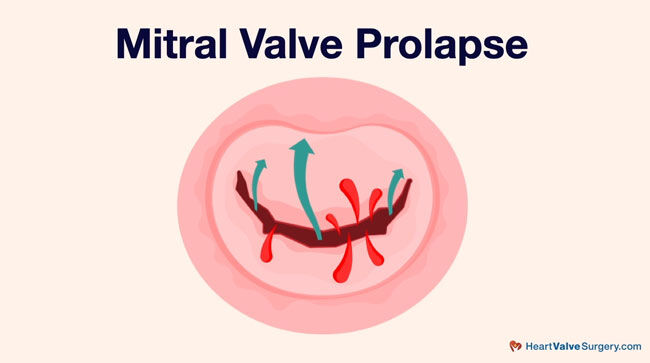
The phrase “mitral valve prolapse” was popularized due to the rise of echocardiograms to diagnose heart valve disease. However, according to research articles, including “The Echocardiographic Assessment of the Floppy Mitral Valve”, prolapse was first described during angiograms as a “buckling motion” of the mitral leaflets into the left atrium.
An additional reference to mitral valve buckling is noted in an article published at the National Library of Medicine, “Ventricular buckling: a factor in the abnormal ventriculogram and peculiar hemodynamics associated with mitral valve prolapse”, which states, “Abnormal intraventicular flow may probably result from associated prolapse of the anterior leaflet and from buckling of the papillary sties toward the mitral annulus.”
So, unless I’m missing something, it appears that mitral valve prolapse and mitral valve buckling are actually one in the same. It is more of a definition issue than anything else. Hope that helps!
Related Links:
- Mitral Valve Prolapse: Symptoms, Causes and Treatment
- Mitral Leaflets: Top 7 Facts Patients Should Know
Keep on tickin!
Adam
From A Surgery Waiting Room In Texas…
By Adam Pick on August 15, 2007
Good news!
As many of you will find out, the time leading up to the actual heart valve surgery operation can be quite anxious. At times, the fear of heart valve repair or heart valve replacement procedures can leave the patient and caregiver sleepless.
That said, one of the BEST parts of the heart surgery experience is when the operation is OVER.
Many times, I hear from my book readers or their caregivers following surgery. Today, was one of those days. Two caregivers for Melissa Causey, her husband (Bryan) and her uncle (Ted), sent me two excellent updates. (FYI, Melissa had the Ross Procedure, also known as the Switch Procedure, performed by Dr. William Ryan in Texas.)
Apparently, Melissa is a “Star” heart surgery patient. According to Bryan, Dr. Ryan completed the aortic and pulmonary valve replacements in about five hours. The big news is that Melissa was sitting up in her chair four hours later. That’s an INCREDIBLE start to recovery!
Go Melissa! Go!!!
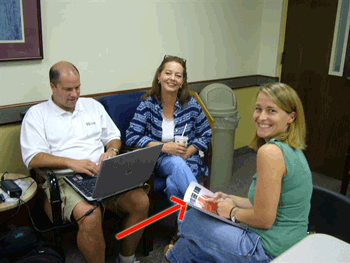
Melissa Causey’s Caregivers Read The Patient’s Guide
To Heart Valve Surgery During Her Heart Valve Surgery
As for Ted’s email to me, I had to share it word-for-word with y’all (that’s my best Texas accent). It really made me smile from ear-to-ear. Here it is:
Adam,I thought you’d get a kick out of this. The picture (above) was taken in the waiting room shortly after we learned Melis was undergoing the Ross Procedure.Note the book on Cheryl’s (Melissa’s cousin) lap. And, I’m sure you can guess where Bryan was surfin’ on his laptop. Ted
I’m amazed! I never thought this book and website would end up in a surgical waiting room in Texas. As my mom said to me yesterday, “You have turned a lemon – your surgery – into lemonade.”
Keep on tickin!
Adam
Dr. Ali Kafi – Heart Valve Surgeon, Detroit, Michigan
By Adam Pick on August 15, 2007
For all you Michiganders out there… I recently came across Dr. Ali Kafi while watching some heart valve surgery videos online. Here is some information about Dr. Kafi.
Ali Kafi , M.D. is board certified in thoracic surgery and specializes in surgical ventricular restoration and transmyocardial revascularization.
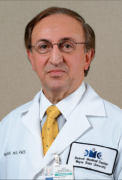
In addition to his clinical practice, Dr. Kafi is an educator – teaching other surgeons how to perform complex surgical procedures. Ali Kafi has published articles and presented on various thoracic surgery topics. Dr. Ali Kafi practices at the Detroit Medical Center.
If there are any cardiothoracic surgeons you would like me to profile, please let me know.
Keep on tickin!
Adam
What About Respirators After Open Heart Surgery?
Written By: Adam Pick, Patient Advocate, Author & Website Founder
Page Last Updated: May 10, 2025
A great patient question just came in about waking up in the intensive care unit. It reads, “Adam, when I come to (wake up) in the intensive care unit will I be on respirators after open heart surgery.”
There are two possibilities here. “Yes”, you will be on a respirator connected to a vent tube or breathing tube, after surgery. The other answer to this questions is… “No”, you will not be on a respirator after heart surgery.
If you wake up with the ventilator tube you may or may not remember it. I know that’s a little tricky but you have to remember that your mind and body will be heavily sedated from the anesthesia administered during your cardiac procedure. That said, the body will need some help “waking up”. Specifically, your lungs need some help. For that reason, most patients are on respirators after open heart surgery. The respirator can also help clear any excess fluid out of the lungs.
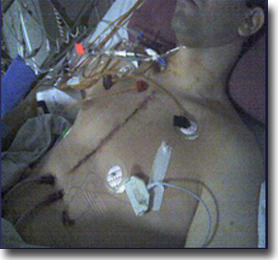
My Picture Just After The Vent Tube Is Removed
What Does An Xray of a Sternum Look Like After Open-Heart Surgery?
Written By: Adam Pick, Patient Advocate, Author & Website Founder
Page Last Updated: June 8, 2025
In prior posts and discussion, I have called open heart surgery a medical miracle. The fact that a surgeon can open you, stop your heart, fix it, start it again and then stitch you up is, in my opinion, AMAZING!!
However, as a patient, I remember an immense amount of fear related to the “miracle”. My concern was not related to the success of the operation or my own mortality (click here to see why).
Instead, one of my biggest concerns was the “cracking of my sternum”. As an athlete, I had broken bones before. However, the central and sensitive nature of the chest did make think twice (if not a hundred) times as I headed into my operation. I was just very curious to know what the sternum fracture healing process would be like.
That said, I thought you all might like to see an xray of sternum before and after open heart surgery involving a cracked chest (aka median sternotomy). The first sternum xray is provided below. As you can see the chest plate is smooth and clear of any fracture.

What Are The Symptoms Of Bacterial Endocarditis?
By Adam Pick on August 13, 2007
My inbox just received an email that I can relate too.
The email reads, “Adam, What are the symptoms of bacterial endocarditis? Is chest pain a symptom of endocarditis?”
Before I dive straight into the answer, you should know that I was initially diagnosed with a bicuspid aortic valve as a little boy. I think I was five years old when I learned about my heart murmur.
From that moment on, I had to pre-medicate every time I saw the dentist. My mom told me it was very, very, very important to take medication every time I went for a cleaning or a cavity filling.
Now, I don’t like the dentist to begin with… So, this just added to my resistance.
At the time, I had no idea that my parents and dentist were protecting me from the problems of bacterial endocarditis. For those of you who don’t know, bacterial endocarditis is an infection of the heart’s inner lining (endocardium) or the heart valves. Problems of bacterial endocarditis can damage or even destroy your heart valves.
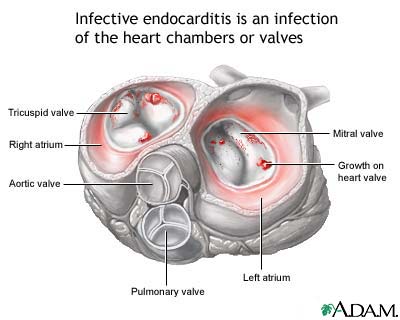
According to the American Heart Association, there are about 29,000 cases of endocarditis diagnosed a year.
You’re Going To Do Great Melissa!!!
By Adam Pick on August 13, 2007
Hey everybody,
Just wanted to give you a quick update on Melissa Causey from Texas. Her surgery was rescheduled for this Tuesday. If you have a minute, please send her a great, big healthy thought!
FYI, Melissa is having the Ross Procedure performed by Dr. William Ryan.
Here’s a picture of Melissa, her husband (Brian) and their daughter (Abigayle).
You’re going to do great Melissa!
Keep on tickin,
Adam
P.S. Your Uncle Ted loves you lots and lots!!!
